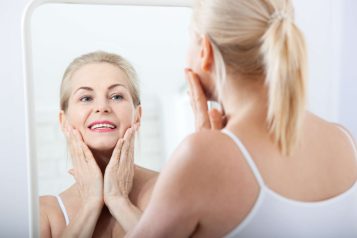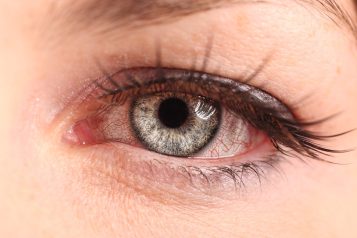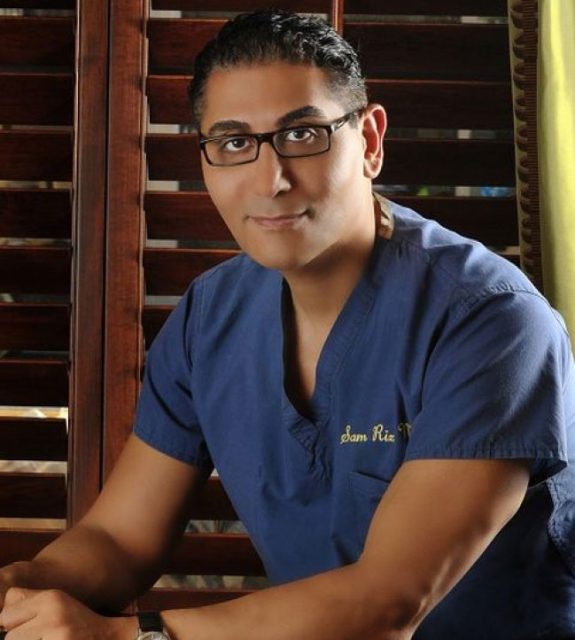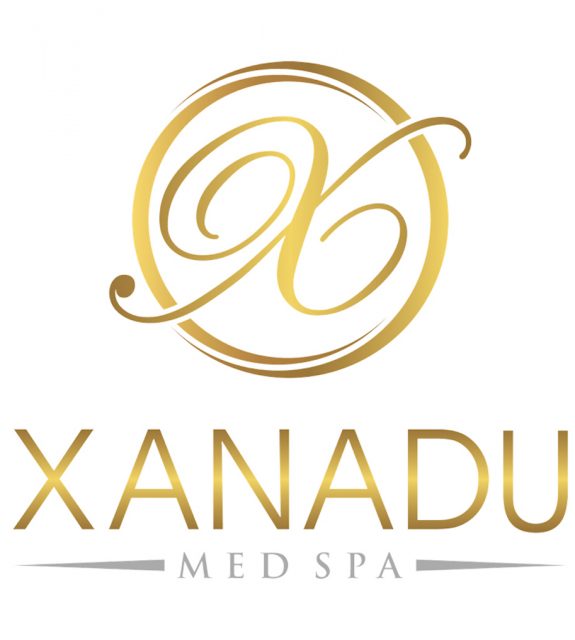Michele S. Green M.D., FAAD., is a Board-Certified Cosmetic Dermatologist, Fellow of the American Academy of Dermatology, and has been an international leader in cosmetic dermatology for over 25 years. Upper East Side patients and those around the globe flock to her practice for cosmetic dermatology treatment. A graduate from Yale University, with an MD and Chief residency from The Mount Sinai School of Medicine in NYC, Dr. Green treats some of the most discerning, demanding women and men in the world, with issues ranging from premature skin aging to hyperpigmentation, rosacea, wrinkles, acne, skin laxity, hair loss, and sun damage.

Photo Credit: Dr. Michele Green
According to the American Academy of Dermatology (AAD), acne vulgaris is considered to be the most common skin condition in the United States, affecting individuals from early adolescence through adulthood. Despite the fact that acne is such a common condition in this country, seeking or selecting treatment for it can seem overwhelming. It is difficult to choose what type of treatment would suit you best.
Luckily, Dr. Michele Green is an internationally renowned board-certified dermatologist with over two and a half decades treating some of the most discerning men and women from around the world. Dr. Green takes pride in the relationships that she builds with her patients, taking the time to understand the specific skin concerns of every individual to artfully customize their treatment approach in a way that centers the particular needs and goals of each patient. She is consistently voted as one of New York’s best physicians by Super Doctors, Castle Connolly, and New York Magazine. When you work with Dr. Green to resolve your acne and reduce your acne scars, she will recommend a combination of the best specially formulated skincare products, acne medications, and in-office treatments to provide you with ideal results and a clear complexion that lasts.
What is Acne?
Acne is a skin condition that involves blockage and inflammation of pilosebaceous units. It can occur anywhere on the body where there are sebaceous glands. However, it is most commonly found on areas such as the face, chest and back as these are the areas with the highest distribution of sebaceous follicles. There are several kinds of acne which can be caused by a number of contributing factors. While the condition is mostly associated with presenting itself during adolescent years, it can very well persist or even develop in adulthood too.
What are the Causes of Acne?
Acne forms when sebaceous glands at the base of hair follicles in the skin become clogged with excess sebum. Sebum is oil that is essential for skin health, keeping it soft and moisturized. Sebum is usually released from the pore onto the skin, but when too much oil is produced or there is an excess of bacteria or dead skin cells that have built up in the pores, the sebum can then be trapped in the follicle. When pores become clogged with excess sebum and bacteria, preventing the oil from leaving the pore properly, then acne lesions form.
While anyone can develop a pimple, there are several factors that might contribute to the chances of someone having a breakout. There is a genetic component involved in acne that will allow for patients with a naturally higher rate of sebum production or secretion to be more prone to breakouts than the average patient. It is not uncommon for this condition to run in the families of these patients.

Photo Credit: Dr. Michele Green
Fluctuations in various hormones are also associated with a higher incidence in acne breakouts. Androgens, in particular, have been linked to higher rates of acne breakouts. Androgens are sex hormones, like testosterone, that have been shown to cause acne to develop in men and women alike. Although testosterone is a male sex hormone, women do have testosterone, too, it is just present in lower amounts.
Acne breakouts can also be influenced by factors such as increased stress, diets that are rich in sugar and fat, and poor sleeping or hygiene habits. When you consult with board-certified dermatologist Dr. Green in her private dermatology office located in the Upper East Side neighborhood of Manhattan, you will thoroughly discuss your family and medical history as well as skincare regimen and other environmental factors that may be contributing to your acne breakouts. Dr. Green may collect and send a sample of blood to the laboratory to be evaluated for any hormonal abnormalities that could indicate increased breakouts. Determining the underlying cause of your acne with Dr. Green is the best way to understand and manage your acne breakouts.
The Different Forms of Acne
- Papules: Papules are acne lesions that appear as raised bumps on the skin. Papules are typically one centimeter or less in diameter. Rather than containing pus, they are composed of a solid material. Papules can later develop into pustules if they become filled with pus.
- Pustules: Pustules are acne lesions usually one centimeter or less in diameter which are filled with pus and appear as an inflamed or red bump on the skin.
- Blackheads: A blackhead is a type of comedone that has an opening at the surface of the skin. The exposure to air is what gives this acne condition its dark color due to the buildup of sebum, dead skin cells, and debris becoming oxidized.
- Whiteheads: Contrary to blackheads, whiteheads a reclosed comedones. They are a type of pimple that forms as a result of a pore becoming clogged with dead skin cells and sebum that are not exposed to air, but rather covered with skin.
- Cysts: Often referred to as “blind pimples,” Cysts develop deep below the surface of the skin where topical treatments can not penetrate them. Cysts are lesions that are filled with pus and do not come to a “head” like other pimples, but appear as a red bump on the skin and are often painful and large in size.
- Nodules: Like Cysts, Nodules are larger and more painful than many other types of acne. These lesions form deep below the skin’s surface and do not form a “head” but instead look like a firm red bump. Nodules are closely associated with the formation of acne scars and should be treated by a dermatologist immediately.
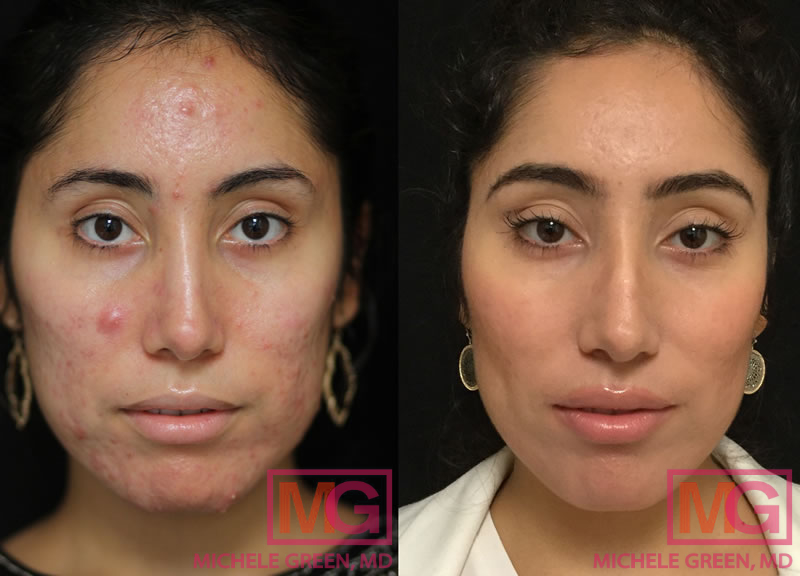
Photo Credit: Dr. Michele Green
Different Acne Breakout Treatments
- Isotretinoin: Commonly known as Accutane, Isotretinoin is often recommended for treatment of severe acne, cystic acne, or recalcitrant acne, which has not responded to any other treatment including oral antibiotics and retinoids. The most common side effect associated with this oral vitamin A derivative is dry skin, lips, and eyes. Patients have to take certain precautions while using Accutane, as the medication can cause increased photosensitivity as well as elevate liver enzymes. Refraining from alcohol consumption and limiting dietary fat intake are recommended for patients on Accutane. In addition, female patients need to have monthly blood tests for pregnancy throughout the course of Accutane, since the medication can cause severe birth defects in a developing infant.
- Acne Surgery: This entails opening acne lesions and removing excess sebum, debris, and dead skin cells, followed by intralesional corticosteroid injections to shrink the acne. Intralesional cortisone (corticosteroid) injections are used to reduce inflammation in pustules and acne cysts. If the cystic acne is large, the lesions may need to be drained first before cortisone is injected into the lesions. Usually this type of acne benefits from topical and oral antibiotics as well.
- HydraFacials: These are medical grade hydradermabrasion treatments that are used to deeply cleanse, gently exfoliate, and intensely nourish the skin. The vortex fusion technology is exceptional for extracting sebum, dead skin cells, and debris that are trapped in the pores and causing acne. The infusion of antioxidants, vitamins, and peptides that follows the cleansing and exfoliating steps helps to enhance the natural protective barrier of skin and can be used to aid in prevention of breakouts.
- Chemical Peels: Chemical peels are a great treatment option for rejuvenating the overall appearance of the skin, exfoliating away dead skin cells, and helping to treat acne breakouts. Dr. Green often employs trichloroacetic acid to perform chemical peel acne treatments. TCA application stimulates skin cell turnover and clears the pores of the skin, resulting in a clear, healthy, smooth complexion.
- Spironolactone: Used to treat hormonal acne in patients with an underlying hormonal imbalance, such as patients with Polycystic Ovary Syndrome. For these patients, Spironolactone will help decrease the androgen (testosterone) excess, lower these levels, and treat their acne. In other patients, it helps regulate the hormonal fluctuations which can cause adult acne.
- Oral Contraceptives: Used to manage hormonal acne breakouts by regulating your hormonal cycle. Oral contraceptives have been approved by the FDA to treat women with hormonal acne. Two popular brands of birth control pills to treat acne are Yaz and Ortho Tri-Cyclen, which combine estrogen and progestin. Some potential side effects of birth control pills are weight gain, nausea, mood swings, and an increased risk of blood clots. Women should avoid cigarette smoking while on oral contraceptives as this increases your risk for blood clots.
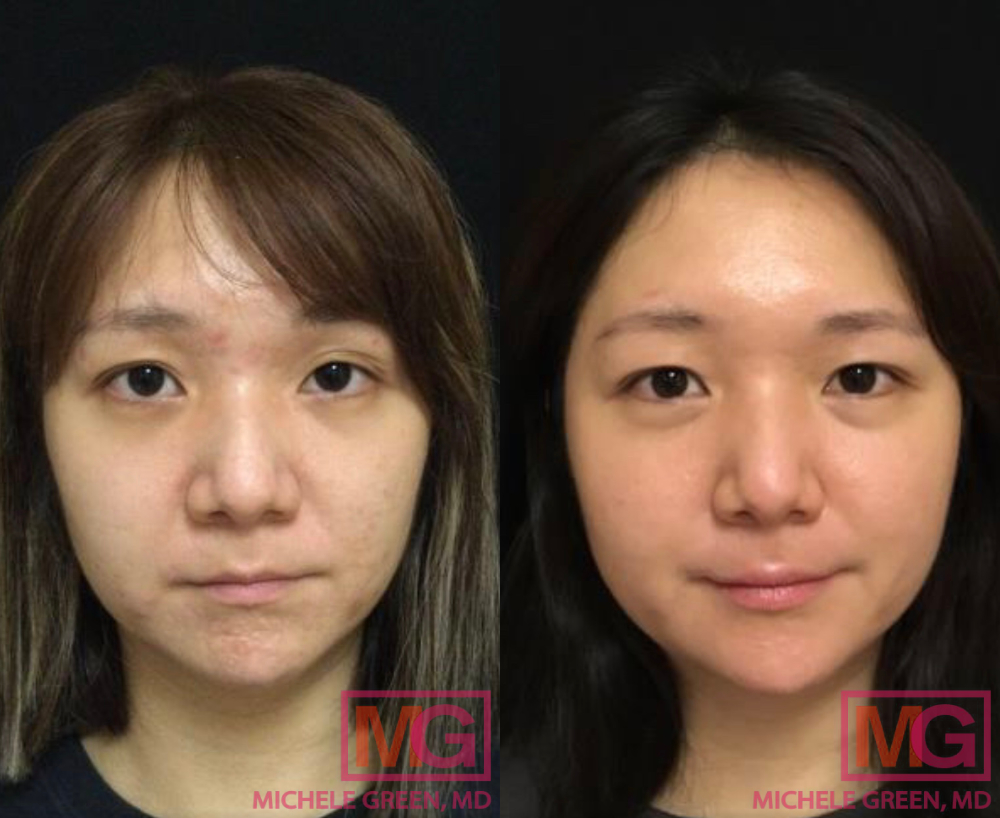
Photo Credit: Dr. Michele Green
Acne Scar Treatment
An acne scar is the result of an inflamed acne breakout, when the affected area of the skin becomes engorged with excess oil, sebum, dead skin cells, and bacteria. As the affected pore swells, the bacteria also increases, and causes damage to the skin tissue. A small area of damage causes a small scar but a deeper infection leads to a deep scar on your skin. Although your skin will try to repair itself, there are many times when the wound is too large, or your skin is too delicate. In these cases, there is not enough new collagen to repair the wound. The result of this lack of collagen is an atrophic, or depressed scar.
The main types of acne scars are Normotrophic scars, Hypertrophic scars, Keloid scars and Atrophic scars.
There are a myriad of methods to help improve the appearance of these depressed scars and Dr. Green is an international expert in the field of acne scar treatment. While some acne is the result of genetics or hormonal imbalances, careful skin care and treatment can avoid acne from progressing into acne scars. It is best not to delay treatment if you have acne breakouts, and never to squeeze or pick your skin, since this will increase your chances of acne scarring.
How can you get started with treating your Acne today?
If you are affected by acne breakouts or acne scars, Dr. Michele Green is here to help. She is a world renowned specialist in Acne treatment and is here to help you with acne. Dr. Green has been consistently voted as one of the “Best Doctors” by Castle Connelly, New York Magazine, Super Doctors, and The New York Times as a pioneer in the field of cosmetic and medical dermatology. Please call the office today at 212-535-3088 or contact us online to schedule a consultation to discuss if you are suffering from acne, it’s time to schedule a consultation with Dr. Michele Green in New York.
For more information, visit Dr. Michele S. Green's social media:







